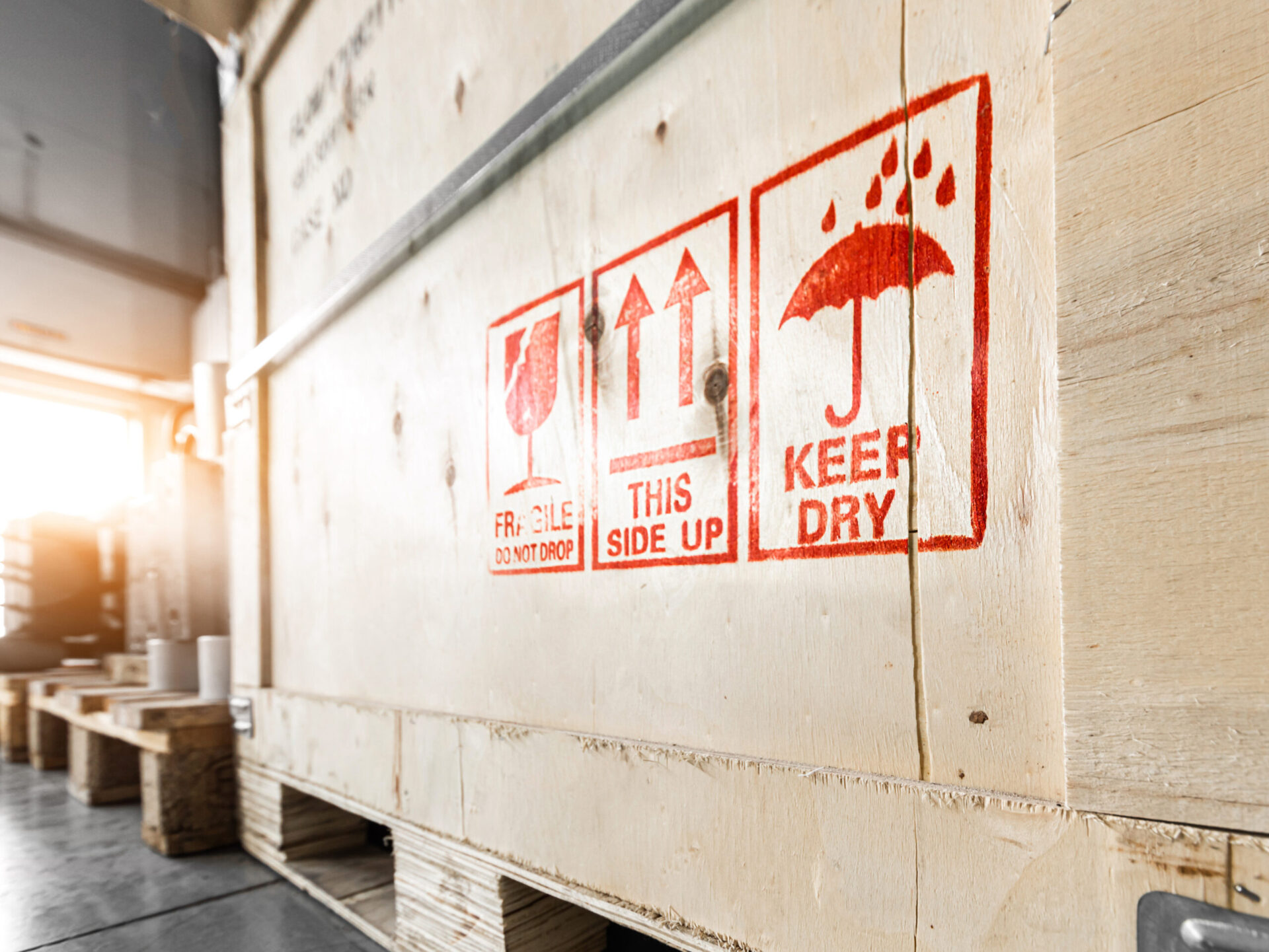5 Best Practices In Machinery Crating & Shipping
Transportation of heavy and valuable equipment is one of the trickiest tasks. The crating, packing, and shipping process requires a lot of expertise. Remember, with these items, there’s always a substantial financial investment.
Therefore, this machinery’s delicate nature, size, weight, and intricacies demand top-notch safety measures. So, how can you ensure your equipment arrives at the destination without incident? This article has all the answers you need.
Defining the terms
Before we get into the nitty-gritty of this topic, it’s important to understand what crating, packing, and shipping mean.
- Crating means placing an item in a sturdy container, often made of wood or plastic, designed to protect it during transportation. It’s typically used for large, heavy, or fragile items that require extra protection.
- Packing involves preparing equipment for shipment by wrapping it in protective materials such as bubble wrap, foam, or packing peanuts.
- Shipping is the transportation of the item to its destination. The main tasks include selecting a carrier, preparing labels and documentation, and ensuring whatever is being shipped is properly packaged.
These tasks make up the most essential part of machinery shipping. Do you have heavy equipment and aren’t sure how to transport it? That’s where the expertise of onsite crating and packing professionals comes in handy. Hire the best company that guarantees safe and affordable onsite packaging in Melbourne.
Best practices in machinery crating, packing, and shipping
The success of this process is as good as the materials used and precautions put in place. So, as you find the right experts for the job, keep the following guidelines in mind:
- Choose the right crate When shipping machinery, it’s important to choose a crate that’s strong enough to support the weight of the equipment. It should also protect the item from damage during transit.Consider using a custom crate that’s designed specifically for your machinery. A custom crate can be designed to fit the exact dimensions of your machinery and can provide extra protection against damage.
Also, go with a crate constructed from high-quality materials that can withstand the rigors of transportation. While at it, ensure the crate is designed to allow for easy loading and unloading, especially for heavy machinery.
Safe Pack utilises high-quality timber for crating to ensure durability and structural integrity. The company carefully selects the materials based on the specific requirements of each item. That’s why we recommend working with experienced professionals during shipment preparations.
- Secure the machinery Make sure the machinery is securely fastened to the crate or pallet to prevent it from shifting during transit. Sudden movements during transportation may damage the equipment or other items in the shipment.
 Use straps or other restraints to hold the machinery in place. Make sure the restraints are tight enough to prevent movement but not so tight that they cause damage. You may also want to employ blocking and bracing materials to prevent the machinery from moving around inside the crate.
Use straps or other restraints to hold the machinery in place. Make sure the restraints are tight enough to prevent movement but not so tight that they cause damage. You may also want to employ blocking and bracing materials to prevent the machinery from moving around inside the crate.
- Protect delicate parts Machinery often has delicate parts that can be easily damaged during transit. To protect these parts, use protective materials such as foam or bubble wrap. Wrap these materials around the delicate parts and secure them in place with tape or other fasteners.
You may also want to consider shrink-wrapping for more protection. A shrink wrap is a plastic film that can be wrapped around the machinery and then heated to create a tight protective seal. It can help prevent moisture, dust, and other environmental factors during transit.
- Label the crate
 Clear labelling is essential for machinery shipments. It helps the carriers and customs officials properly identify and process the shipment, ensuring it arrives at its intended destination.Proper labels should include as much relevant information as possible. Safe Pack follows meticulous labelling and documentation practices, such as marking the crates with handling instructions and identifying hazardous materials.
Clear labelling is essential for machinery shipments. It helps the carriers and customs officials properly identify and process the shipment, ensuring it arrives at its intended destination.Proper labels should include as much relevant information as possible. Safe Pack follows meticulous labelling and documentation practices, such as marking the crates with handling instructions and identifying hazardous materials.
This task is one of the most straightforward yet most crucial in any shipping process. It streamlines logistics and reduces the chances of mishandling or delays.
- Select a reliable carrierAs mentioned, working with professionals can make a massive difference to your equipment shipping process. Unfortunately, many carriers are in the market today, but not all meet the desired standards.
So, how can you find a reliable company for packing and shipping machines? First, consider the carrier’s experience in the industry. How long have they existed? How many clients have they worked with, and what was the customers’ feedback?
The company you choose should also have an insurance policy to cover your items against loss or damage. Remember, accidents can happen when goods are in transit, and you wouldn’t want to find yourself in a more frustrating situation.
Another crucial factor to keep in mind is the shipment tracking system. In this digital age, most companies provide their clients with tracking information throughout the shipment.
Finally, consider the fees. You’re likely to find two options, standard and express shipping. The latter is costlier, but you’ll enjoy quicker delivery. However, the former can still serve the purpose if you’re not in a hurry.
Conclusion
Safety should always be the priority when crating, packing, and shipping your valuable machinery. Secure your equipment in the right crate and protect all delicate parts. Safe Pack is among your best options when choosing a reliable packaging company. The team’s expertise in providing customised crating solutions and secure onsite packing techniques ensures the safe transportation of machinery.




